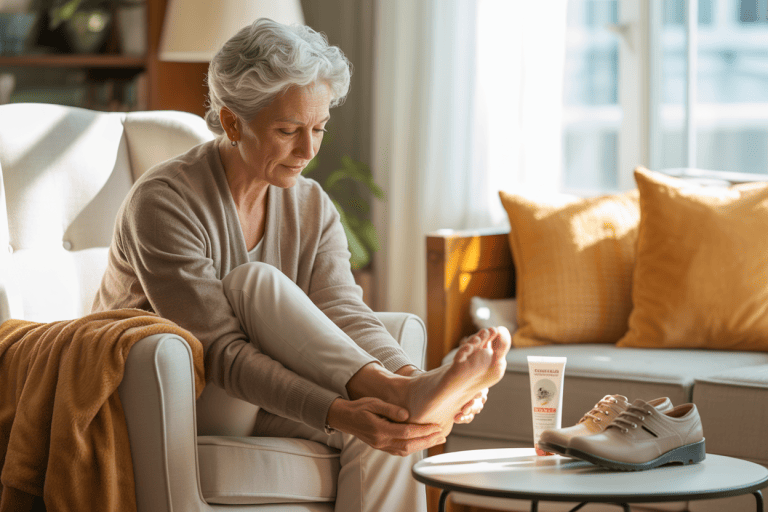As we head into colder, wetter weather, it’s the perfect time to check your footwear – not just for warmth, but for wear, support, and safety. Most people don’t give their shoes much thought until they’re falling apart or causing pain. But just like your car needs an MOT, your shoes do too.
At Louisa Seymour Podiatry, we regularly see foot problems that stem from worn-out or unsupportive footwear. So before winter sets in, here’s how to give your shoes a quick but essential health check.
Why Footwear Matters in Autumn and Winter
As you swap sandals for boots and closed shoes, your feet face new challenges:
-
Harder surfaces
-
Longer walks
-
Wet, slippery pavements
-
Less breathability
-
Increased time in enclosed shoes
All of these can contribute to blisters, arch pain, heel discomfort, and fungal infections – especially if your shoes aren’t doing their job.
Signs Your Shoes Need Replacing
Not sure if your footwear is past its best? Here are common red flags:
-
Worn soles or no tread left – You’re more likely to slip, especially in wet weather.
-
Flattened cushioning – Offers no shock absorption and may lead to joint pain.
-
Cracked or damaged uppers – Let in water and can cause cold, damp feet.
-
Misshapen or collapsed heel counter – Reduces ankle support and stability.
-
Unpleasant odour that won’t go away – Can indicate fungal growth inside the shoe.
-
One side more worn than the other – A sign that your gait may be uneven, possibly needing a podiatry assessment.
What to Look for in Reliable Autumn Footwear
Use this checklist to assess or shop for supportive seasonal shoes:
-
✅ Firm heel counter for ankle stability
-
✅ Good arch support to reduce foot fatigue
-
✅ Sufficient cushioning to absorb shock
-
✅ Deep, wide toe box to avoid cramping or rubbing
-
✅ Non-slip sole with solid grip for wet surfaces
-
✅ Breathable lining to reduce sweat and odour
-
✅ Water-resistant material like leather or Gore-Tex
If any of your go-to shoes fail multiple points above, it might be time to replace them.
Don’t Forget About Fit
Feet can change shape over time due to age, weight, or health conditions. If your shoes suddenly feel tighter or looser, don’t ignore it. Poor fit is a major cause of corns, calluses, and nail problems.
-
Shop later in the day when your feet are slightly swollen
-
Always try shoes on with the socks you’ll actually wear
-
Leave a thumb’s width between the longest toe and the end of the shoe
When to Seek Advice
If your shoes feel comfortable but you’re still experiencing pain, aching arches, or sore toes, it could be down to your foot structure or walking pattern. A podiatrist can carry out a biomechanical assessment and advise on insoles, orthotics, or footwear adaptations.
Conclusion
Giving your shoes an MOT now can save you from winter discomfort later. A quick check for wear, fit, and support could be the difference between walking pain-free or developing niggling foot issues. If you’re unsure whether your shoes are helping or hurting your feet, Louisa Seymour Podiatry is here to help.
Book an appointment and give your feet the support they need this season.







